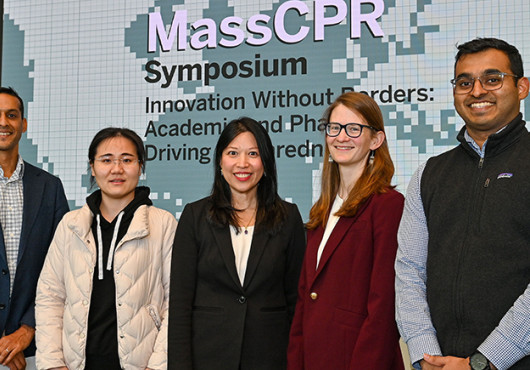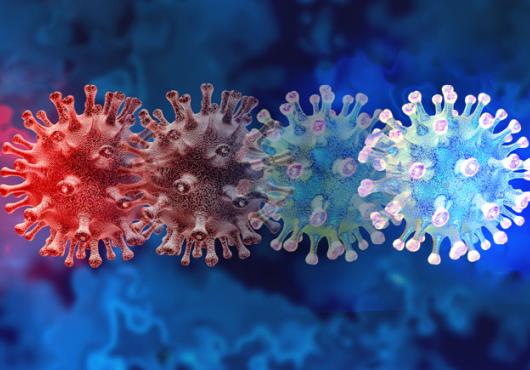
Image: bradleyhebdon/iStock /Getty Images Plus
This article is part of Harvard Medical School’s continuing coverage of medicine, biomedical research, medical education and policy related to the SARS-CoV-2 pandemic and the disease COVID-19.
With confirmed and suspected cases of the new coronavirus, SARS-CoV-2, spreading throughout the United States, school and district officials are starting to plan for school closures and shifts to online learning.
Yet such measures are costly and disruptive for schools, students, families, employers and communities. They may also disproportionately harm lower-income families, who may lack the kind of protections—job security, sick days, opportunities to work remotely—that allow caregivers to stay home with children. These families may be less likely to have computers with broadband access for online learning, and they frequently depend on school breakfast and lunch programs to meet their children’s nutritional needs.
While contingency planning is essential, schools and districts can take one immediate action that is low-cost and highly effective: Enabling all students and adults to wash their hands with soap and water frequently.
“Frequent handwashing with soap and hot water for 20 seconds is a proven way to reduce disease transmission,” said Marc Lipsitch, professor of epidemiology and director of the Center for Communicable Disease Dynamics at the Harvard T.H. Chan School of Public Health. “It is one of the simplest and most effective things we can do to prevent ourselves and our loved ones from getting infected.”
And yet well-stocked school restrooms and healthy handwashing habits are not always the norm. A recent investigation by the Boston Globe revealed that public health inspectors had found problems in 89 of 111 bathrooms in Boston Public Schools. In Detroit, students filed a lawsuit against the Michigan Department of Education noting nonworking sinks and lack of basic supplies such as toilet paper. The issues extend beyond infrastructure.
“New York City teachers have described elementary schools that refuse to allow students to use bathroom sinks because washing hands ‘wastes time’ and ‘causes incidents, such as water fights,” said Harvard Graduate School of Education Professor of Education Meira Levinson. “This is a good time to turn these approaches around. By investing in bathroom maintenance and improvements and by changing the culture around handwashing, schools have an opportunity to show students both that their health and well-being are critically important and that they can be part of a public health solution that will help others.”
The value of building a positive approach to hygiene in schools is clear.
“The school setting is an ideal place to introduce and reinforce the importance of handwashing for long term health,” said Richard Malley, HMS professor of pediatrics and senior physician in the Division of Infectious Diseases and director of the Travel and Geographic Medicine Clinic at Boston Children’s Hospital. “Emphasizing healthy handwashing behavior early in life has significant long-term benefits, including fewer days of school or work missed and reduction in transmission of disease.”
When it comes to curbing the spread of coronavirus, experts say, the most effective response for schools and educators may be: Think global, act local.
As public health responses to this emerging concern continue to take shape, schools and communities can monitor the global landscape, but they should focus their attention on their local, everyday settings—classrooms, cafeterias, bathrooms, the gym—where behavior and habits can help mitigate the effects of any disease outbreak.
- Handwashing remains the single most effective way to prevent the spread of infection. Mandatory handwashing policies have been linked to reduced illness-related absences. Make sure students and all school staff are aware of the importance of washing hands. Adults should practice and model good public-health hygiene on their own: handwashing, cough-covering, staying home when sick or symptomatic.
- Teach best practices like scrubbing for 20 seconds with soap and warm water and making sure to clean the backs of hands, between fingers and under the fingernails.
- Encourage handwashing before meals; upon entering the building or classroom; after recess; after coughing, blowing your nose or sneezing; and after using the bathroom.
- Schools should build disease-prevention practices into daily schedules.
- Add five minutes to lunch and recess periods to ensure students have time to wash their hands.
- Build in the practice of handwashing throughout the day, during transition times.
- Provide hand sanitizer at school entrances.
- Set up hand-sanitizer stations in each classroom, so that each time children return to the classroom, they get a squirt. Students should be taught to spread the sanitizer evenly and entirely over both hands and to allow their hands to air-dry. (Note that public health guidance says that washing hands with soap and water is most effective, but hand sanitizers with at least 60 percent alcohol are a sound alternative when soap and water are unavailable.)
- Post handwashing reminders around the school that reinforce proper handwashing techniques.
- Make it a classroom habit to regularly clean or wipe surfaces that everyone touches often. Appoint students to a cleaning squad, and make it as special as being appointed line leader or any other classroom perk.
- Schools should ensure that all restrooms are always well-stocked with soap and paper towels. All sinks should have hot and cold running water. Washrooms should also be accessible—all students should be able to reach the sink.
- Clean public washrooms frequently.
- Schools can mobilize PTO and parent volunteers to equip schools and classrooms with cleaning supplies, as needed.
- Smooth out processes to accept parent donations of soap, hand sanitizer and cleaning supplies.
- Take advantage of classroom representatives, if they exist at your school. These classroom-based parent volunteers can coordinate preparedness at a hyper-local level. These preparations can be fun and customized to each classroom.
- Schools can empower middle- and high-school students to get active through “soap drives,” by supporting and thanking maintenance staff, and by student-created hygiene-awareness social media campaigns and posters, etc
- Schools can tap into young people’s desire to take leadership roles in causes they care about. Help them learn that handwashing and other preventive public health measures will help others and will make a difference.
- Schools can use this opportunity to create relevant learning experiences. Encourage science teachers to create a mini-unit on viruses, germ fighting or the science behind the spread of infections. Have students become epidemiologists, sleuthing out clues and finding patterns in how diseases spread.
Focusing on prevention alongside education can not only help control the present spread of disease but can also equip students to be responsible and responsive in the future.
“All of these critical measures can support young people as they learn not only to protect themselves but also their communities in the midst of a global public health crisis. We need their action and commitment to become the prevention advocates of the future,” said Howard Koh, the Harvey V. Fineberg Professor of the Practice of Public Health Leadership at the Harvard Chan School, former U.S. Assistant Secretary for Health and former Massachusetts Commissioner of Public Health.
Protecting public health: The importance of school-community partnerships
Under-resourced schools are particularly vulnerable, raising broader questions around equity and funding for basic supplies and maintenance. For schools with scarce resources, a call to action that demands supplies and infrastructure could increase the burden. In such cases, communities—including health providers, community health organizations and businesses—should step up to take responsibility, working with schools as partners to help address the problem.
“The coronavirus crisis presents an opportunity for various community partners to reach out to their school colleagues and offer various forms of support to mitigate the threats to children and families. Schools alone will be unable to solve this problem; a coordinated, community response is urgently needed,” says S. Paul Reville, the Francis Keppel Professor of Practice of Educational Policy and Administration and founding director of the Education Redesign Lab at the Harvard Graduate School of Education.
Although schools will follow local guidance during this health crisis, the resources below offer information on building long-term, cross-sector partnerships between schools and community stakeholders:
- The Education Redesign Lab: This initiative offers innovative funding solutions and a pathway to building coalitions of community stakeholders to support the growth of the whole child and the creation of a cradle-to-career pipeline of supports and opportunities for all children.
- The California Endowment: A health care model that focuses on empowering communities to address the social determinants of health through collective action. Their Building Healthy Communities initiative focuses on local change designed for broader impact.
- The Partnership for Resilience: A nonprofit focusing on integrating education, health and community to empower the whole child. PFR’s communities in Chicago Southland and rural Southern Illinois are part of EdRedesign’s By All Means initiative.
Adapted from a Harvard Graduate School of Education news release.
Additional resources:
Centers for Disease Control and Prevention
CDC Guidance for Childcare Facilities and K-12 Schools to Plan, Prepare and Respond to COVID-19
Guide to Proper Handwashing Technique
Tips for Families to Help Children Develop Good Handwashing Habits
CDC Guidance for Institutions of Higher Education (and Foreign Study/Travel Programs)
Developing a High-Quality School Emergency Operations Plan
Combating Stigma and Discrimination
World Health Organization
Instructional Videos on the Virus and Prevention





